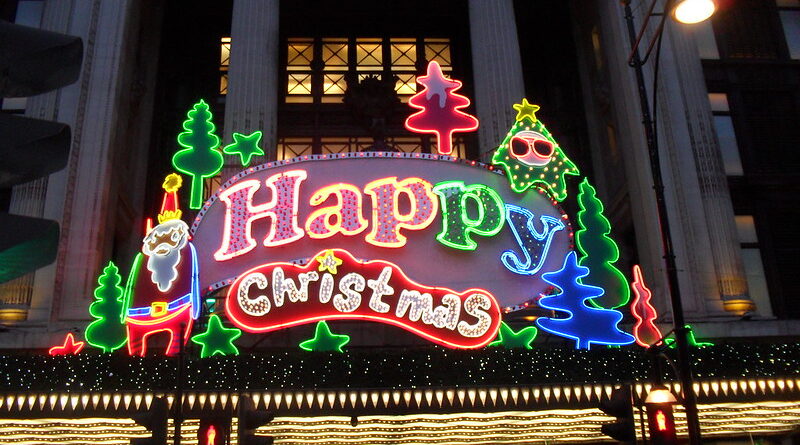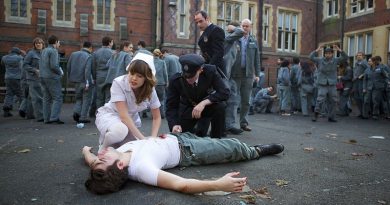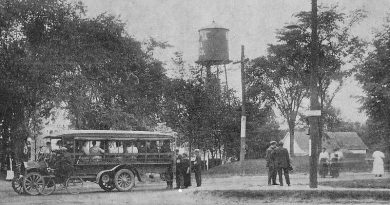Season’s Greetings: A Short History of Christmas
Christmas Day is a public holiday in many of the world’s nations, and is celebrated religiously by a majority of Christians, as well as culturally by many non-Christians, forming an integral part of the holiday season centered around it.
Historians suggest that various factors contributed to the selection of December 25 as a date of celebration: it was the date of the winter solstice on the Roman calendar and it was nine months after March 25, the date of the vernal equinox and a date linked to the conception of Jesus, known as the Annuniciation.
After declining for several centuries, the feast regained prominence after 800 AD when Charlemagne was crowned emperor on Christmas Day.
Christmas during the Middle Ages was a public festival that incorporated ivy, holly, and other evergreens. Christmas gift giving during the Middle Ages was usually between people with legal relationships, such as tenant and landlord.
The annual indulgence in eating, dancing, singing, sporting, and card playing escalated in England, and by the 17th century the Christmas season featured lavish dinners, elaborate masques, and pageants. In 1607, King James I insisted that a play be acted on Christmas night and that the court indulge in games.
Puritans and Christmas
Later during the Protestant Reformation, the Puritans banned Christmas in England, associating it with drunkenness and other misbehavior.
In Colonial America, the Pilgrims of New England shared radical Protestant disapproval of Christmas. The Plymouth Pilgrims put their loathing for the day into practice in 1620 when they spent their first Christmas Day in the New World working – thus demonstrating their complete contempt for the day.Non-Puritans in New England deplored the loss of the holidays. Christmas observance was outlawed in Boston in 1659. The ban by the Puritans was revoked in 1681 by the English governor, however it was not until the mid-19th century that celebrating Christmas became fashionable in the Boston region.
It was restored as a legal holiday in England in 1660, but remained disreputable in the minds of many people. In the early 19th century, Christmas was re-conceived by Washington Irving, Charles Dickens and other authors such as a holiday emphasising family, children, kind-heartedness, gift-giving, and Santa Claus
The Christmas Tree
The Christmas tree was first used by German Lutherans in the 16th century, with records indicating that a Christmas tree was placed in the Cathedral of Strassburg in 1539, under the leadership of Protestant reformer, Martin Bucer, a colleague of Martin Luther.
In the United States, German Lutherans brought the decorated Christmas tree with them; the Moravians put lighted candles on those trees. Then others placed a star at the top of the tree symbolizing the Star of Bethlehem.
In the 19th century, it became popular for people to put an angel to top the Christmas tree in order to symbolize the angels mentioned in the accounts of the Nativity of Jesus.
The Christmas tree is also considered by some as Christianisation of pagan tradition and ritual surrounding the Winter Solstice, which included an adaptation of pagan tree worship.
In Britain, the Christmas tree was introduced in the early 19th century following the personal union with the Kingdom of Hanover by Charlotte of Mecklenburg-Strelitz, wife of King George III. In 1832, the future Queen Victoria wrote about her delight at having a Christmas tree, hung with lights, ornaments, and presents placed round it.After her marriage to her German cousin Prince Albert, by 1841 the custom became more widespread throughout Britain.
An image of the British royal family with their Christmas tree at Windsor Castle created a sensation when it was published in the Illustrated London News in 1848. A modified version of this image was published in the United States in 1850. By the 1870’s, putting up a Christmas tree had become common in America.
Nativity Scenes
Nativity scenes are known from 10th-century Rome. They were popularised by Saint Francis of Assisi from 1223, quickly spreading across Europe. Different types of decorations developed across the Christian world, dependent on local tradition and available resources, and can vary from simple representations of the crib to far more elaborate sets
The traditional colors of Christmas decorations are red, green, and gold. Red symbolizes the blood of Jesus, which was shed in his crucifixion, while green symbolizes eternal life, and in particular the evergreen tree, which does not lose its leaves in the winter, and gold is the first color associated with Christmas, as one of the three gifts of the Magi, symbolizing royalty.







